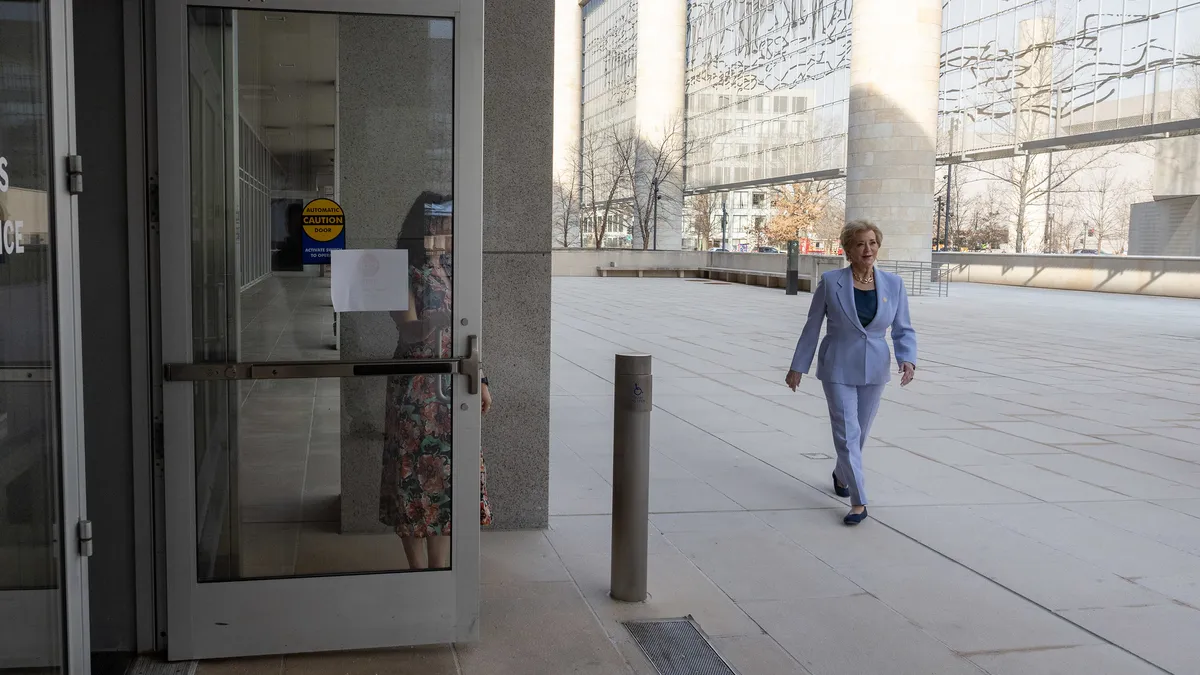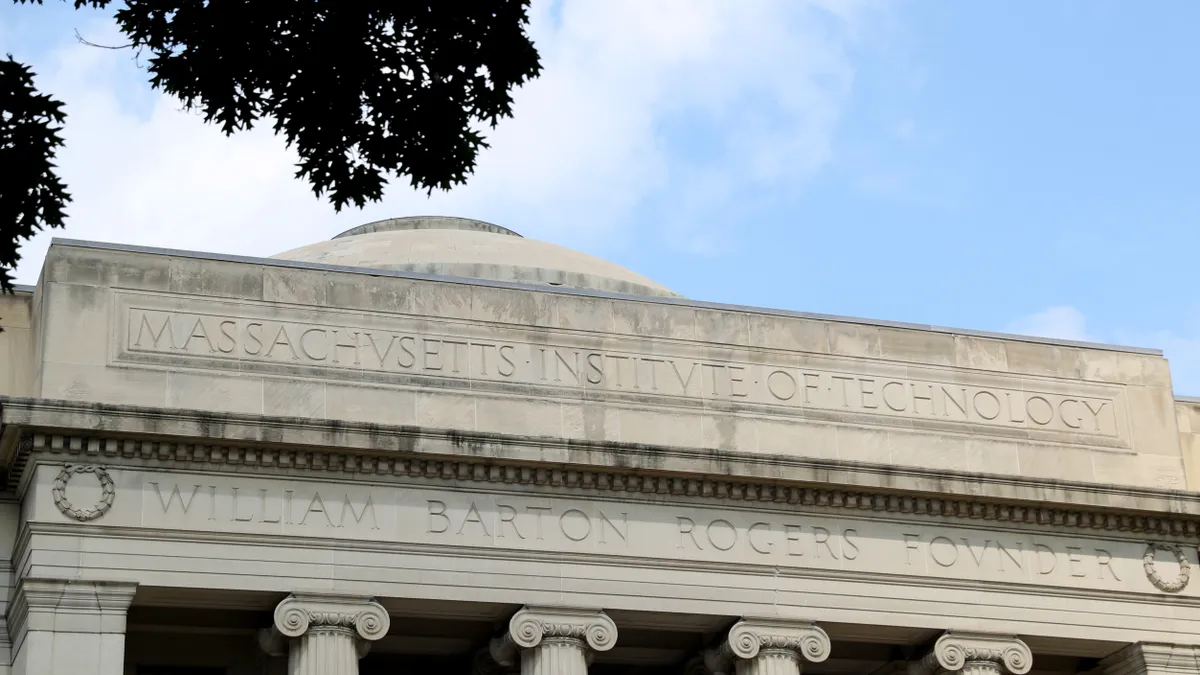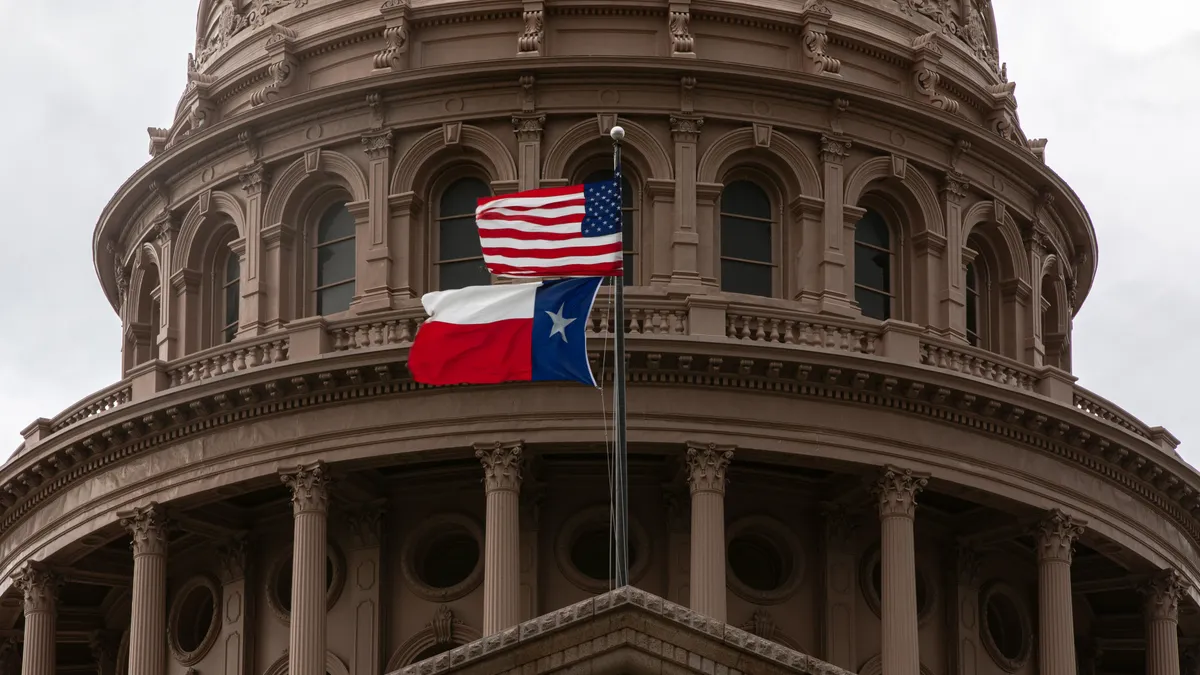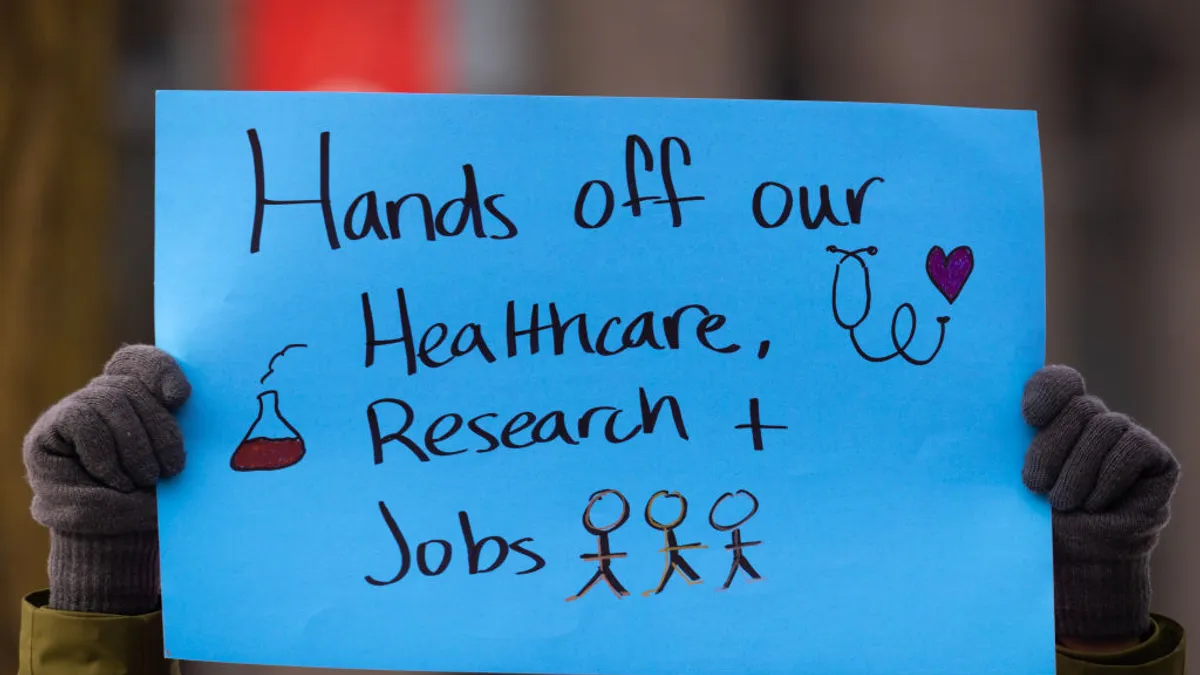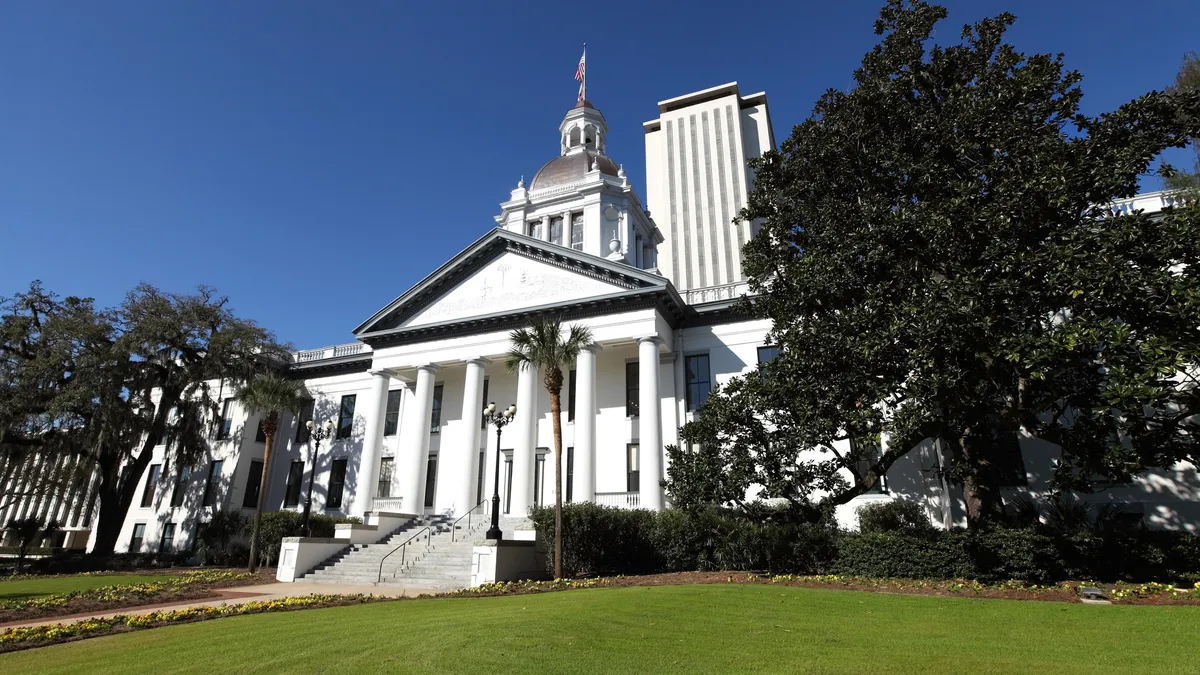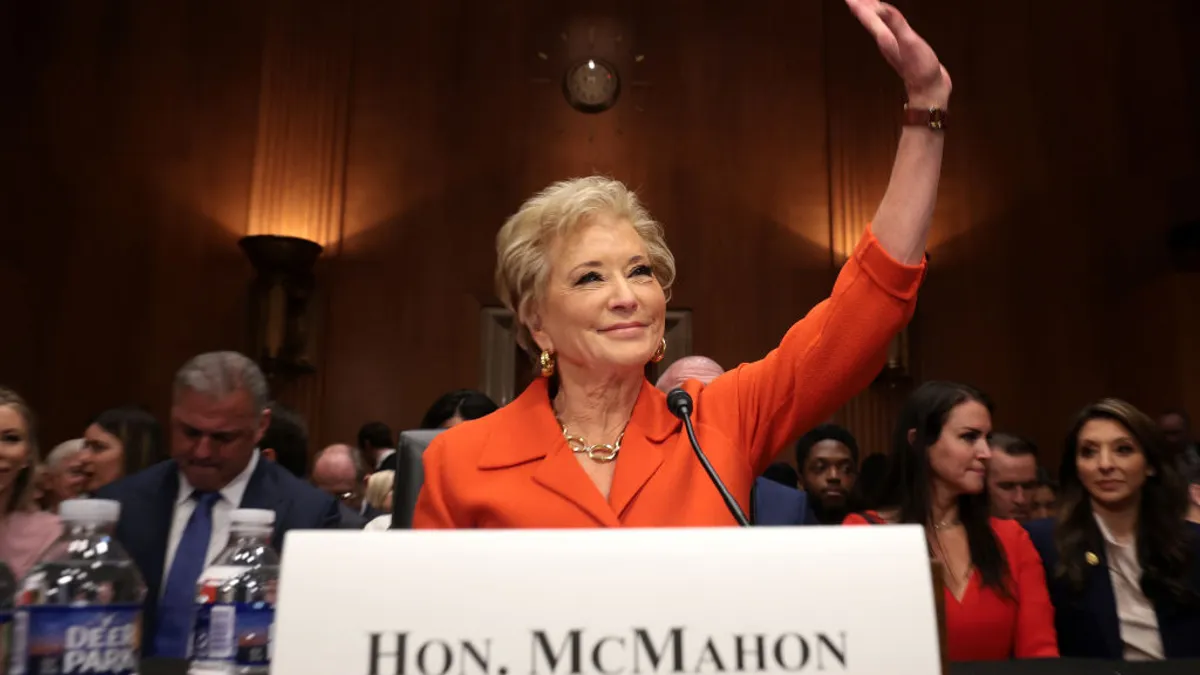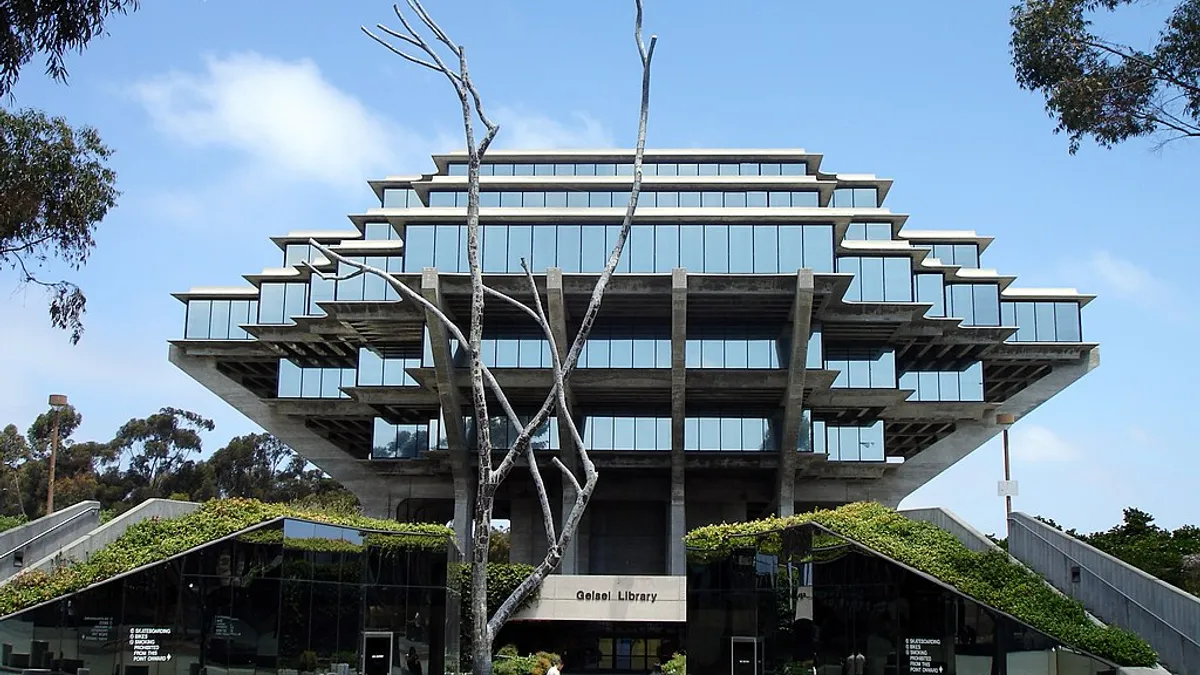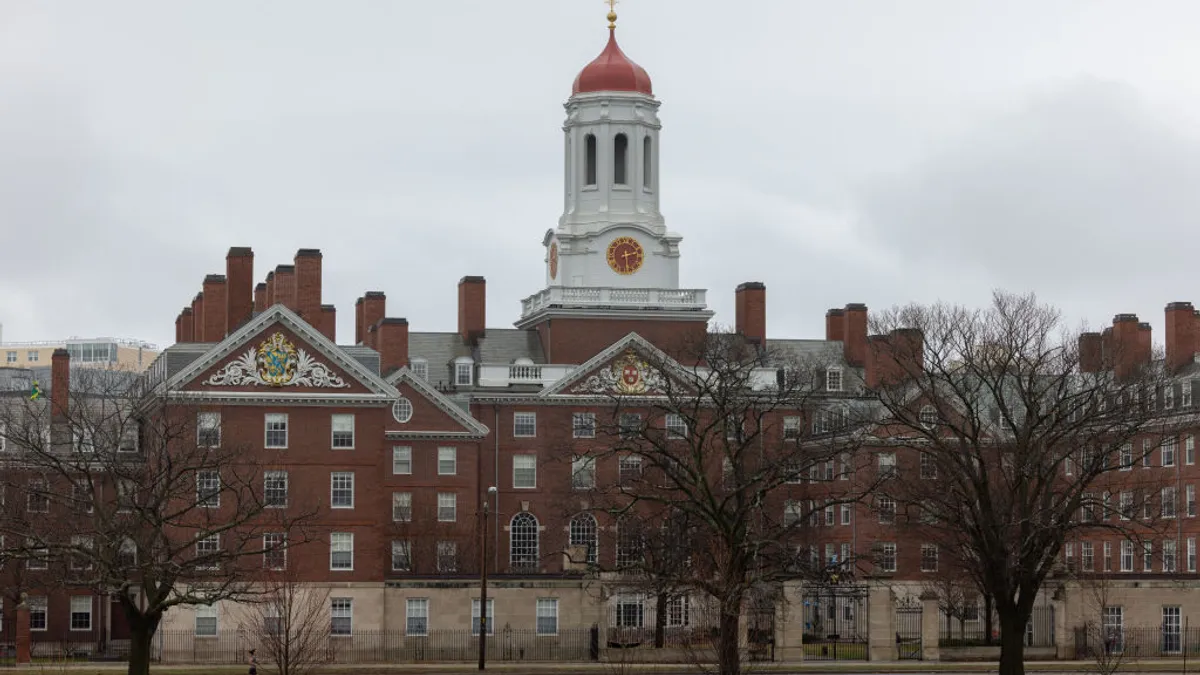SAN DIEGO — U.S. Education Secretary Linda McMahon on Tuesday defended the Trump administration’s move to dismantle the U.S. Department of Education, arguing it was necessary to eliminate bureaucracy, while reiterating the agency would preserve Pell Grants and other funding programs.
“We just can’t keep going along doing what we’re doing,” McMahon said at ASU+GSV Summit, an annual education, workforce and technology conference. “Let’s shake it up. Let’s do something different, and it’s not through bureaucracy in Washington.”
McMahon acknowledged, however, that the Education Department can’t be closed without congressional approval, saying the agency wants to work with lawmakers.
“I want to have them partner with us so that they understand that what we really want to provide for the states are best practices and tools to help the states," McMahon said. "When there is no longer that Department of Education, there are other agencies, etc., that will uphold and provide that.”
Even before Trump signed an executive order directing McMahon to shut down the agency “to the maximum extent appropriate,” it eliminated roughly half of its workforce, sparking concerns it wouldn’t be able to carry out key functions.
Those cuts include over 100 union employees working in the Institute of Education Sciences, the Education Department’s research and data arm. IES oversees the National Assessment of Educational Progress, often referred to as the Nation’s Report Card, which tracks K-12 student achievement.
The Education Department has said that it will restructure IES to provide more useful data about student outcomes. But laid-off employees have warned that leaving the office with a skeletal staff will lead to decline in the quality of research it oversees.
McMahon confirmed Tuesday that the Education Department is looking to revamp IES, saying the growth of the program had led to "mission creep."
“Suddenly, you look around and you're going, ‘Why are we doing this? Why are we researching that? And we're ignoring this over here,’” McMahon said. “There is a lot to look at with IES.”
McMahon also told conference attendees that the Education Department would preserve NAEP but left the door open on changing it.
“Does NAEP need to get revised? I don't know that answer,” McMahon said. “I'm not a technology expert, but I would really be interested in hearing what we need to do. How can we measure differently?”
The Education Department has also made recent K-12 moves. The agency issued a memo last week directing public schools to eliminate diversity, equity and inclusion programs or risk losing Title I funding, which provides money to schools with high shares of low-income students.
The memo says it is impermissible for schools to have DEI programs meant “to advantage one’s race over another.”
When asked about whether this would impact cultural celebrations, McMahon argued it was key for everyone to be included.
“Like Black History Month, it’s not just about Blacks, it’s about our history, our country,” McMahon said. “And if we're having, you know, an Asian American group, well, it shouldn't just be Asian Americans. We should welcome everyone to come in and learn about that history and that diversity.”
The Education Department has also targeted higher ed DEI by issuing guidance threatening to cut off federal funding to colleges that consider race in any of their policies.
The agency has since opened over 50 investigations into colleges it alleges have race-based programs or scholarships. The majority of probes were opened over the institutions’ ties to The PhD Project, a nonprofit previously focused on helping underrepresented students earn graduate degrees.
When asked about how she would ensure historically Black colleges and universities could continue to play a role in educational opportunities for students, McMahon said she wasn’t aware of any discussions about cutting funding to HBCUs and plans to visit more of them.
“There’s a perfect example,” McMahon continued. “Enrollment is open to everyone, and some of the most successful and accomplished graduates who are coming out of HBCUs are other ethnicities other than Black, and I think that's a real testament to show about that inclusion.”



